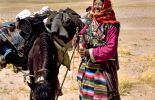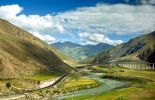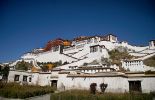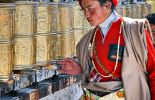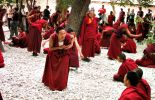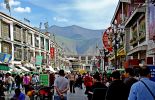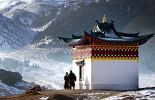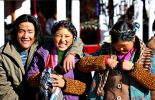Related Links
|
|



Discovering the essence of Tibet and classic Chinese historical highlights are the core of this Albatros journey. We take you on a voyage that starts with the most famous of China’s landmarks, the Forbidden City and the Great Wall.
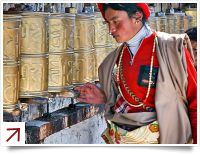 After a brief sojourn in Beijing, we embark on a plane westwards towards the Qinghai-Tibetan plains.
After a brief sojourn in Beijing, we embark on a plane westwards towards the Qinghai-Tibetan plains.
In Lhasa, we'll be visiting the magnificent Potala Palace, the traditional home of the Dalai Lamas. Our Lhasa experience will also include the Jokhang Temple where devout pilgrims prostrate themselves in front of the temple doors and monks tend to butter lamps and burn incense. The beautiful park of Norbulingka, the summer residence of the Dalai Lamas, will be the last stop before leaving for Gyantse and the open landscape of the Friendship Highway.
Witness the heated debates on Buddhism by monks at the Sera Monastery and enjoy the spiritual waters of Yamdrok Lake. We continue our voyage to Shigatse and visit the Palcho Monastery, one of the oldest monasteries in Tibet. The adventure continues with a train journey on the world’s highest railway from the Roof of the World to Lanzhou before heading back to Beijing.
A child is defined as 12 years or younger and below 1.20m in height.
We reserve the right to make improvements and changes to the itinerary due to local circumstances or events outside our control.
For transfers between destinations we use modern and comfortable vehicles that have air conditioning.
This tour does not include any strenuous activity so no particular level of ability is required, however please be prepared for some walking. If you have any concerns or questions regarding disability access, please contact us in advance.
If you have any particular dietary preferences or requirements, please make these clear when you make your booking. Most types of diet can be catered for. We will eat at local restaurants. It’s not a problem to maintain a vegetarian diet in China.
In general, tourists do not need any vaccinations. Malaria vaccinations are not necessary in most parts of China. However, we advise you to consult with your doctor before travelling. For more information about health and vaccinations, please look at this website. [http://www.fco.gov.uk/en/travel-and-living-abroad/travel-advice-by-count...
Entry to Tibet requires a Tibet Travel Permit or Tibet Entry Permit. These must be acquired before entry.
If you need to cancel We understand that your travel plans sometimes change and we try to be as flexible as possible. However as we have to book accommodation at hotels we are also bound by their cancellation policies. In general, the following rules will apply when cancelling a tour you have booked: - If cancelling more than 45 days before commencement of our services there is no cancellation fee and we will refund 100% of your money - If cancelling within 45 to 31 days before commencement of our services: 20 % of the total booking value will be levied - If cancelling within 30 to 15 days before commencement of our services: 60 % of the total booking value will be levied - We are unable to offer a refund if cancelling less than two weeks before commencement of our services For full details of our cancellation terms, please see our general Terms and Conditions.
